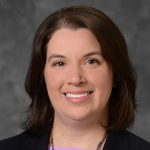Integrated Primary Care Enabled Sharp Rees-Stealy to Pivot for Pandemic Needs
With the advent of the COVID-19 pandemic, Sharp Rees-Stealy, a 22-location comprehensive medical group in San Diego county, swung into action. Its charge was twofold: ensure that people who might be infected with the virus could be seen and treated safely, and that the thousands of other patients with routine or emergency health care needs would get care in a safe environment.
From On-Site to Remote Care
The staff and leadership swiftly organized to accomplish three goals:
- Switch as many interactions as possible to telehealth — phone, video and online. The medical group’s investment into telehealth technology paid off as video and phone visits soared, spiking from an average of 50 – 60 telemedicine visits a day in February to more than 2,500 video and phone visits daily in March. To protect new patients seeking care, the rule requiring them to be seen in person was relaxed so that they could have their first visit remotely.
- Consolidate offices to preserve critical supplies, ensure intensive cleaning, and best deploy needed medical staff. Many staff are working from home, including physicians and clinicians who can see patients virtually. In the clinics, exam rooms, check-in kiosks and waiting areas were cleaned between patients, and doorknobs and other frequently touched services cleaned every hour. Surfaces are wiped with disinfectant every two hours, and hygiene stations with sanitizer proliferated in administrative buildings. Only credit cards are accepted for payment; no cash or checks. Having fewer people in the clinics also means that fewer people needed to wear protective gear, making more supplies available for front line staff.
- Set up tents outside its urgent care centers for respiratory clinics. Patients are asked to call first before coming in. If they have symptoms that might indicate the presence of COVID-19, they are directed to the outside respiratory clinic. From the moment they enter the patient parking lot, these patients are separated from the general population, given hand sanitizer and a mask, and assessed and treated right in the tent, including lab work. To keep respiratory patients separated, different walkways are set up to move from one area to another.
The immediate segue to remote care was only possible because of the investment and training in telehealth the clinic had made during the last five years. The telehealth journey had originally started with phone visits and training for primary care doctors. The next step was moving to video visits with additional instruction for staff, as well as bringing in specialists for training on both types of visits. The goal was to offer patients a range of options: in-person or remote physician evaluations, telephonic nurse advice and triage, and online portals for scheduling and communication.
With the advent of the pandemic, clinician education ramped up at warp speed so that the medical staff could serve existing and new patients remotely. Physicians, including specialists, quickly recognized that an option that had been a convenience or an alternative to in-person care is now a necessity.
Protecting the Chronically Ill
The medical group’s cohort of patients who were already ill with a chronic illness or who had multiple medical problems are especially vulnerable in light of the pandemic. The population health team stepped in with intensive, personal outreach to each patient. The group makes sure patients are safe, safety, that they knew how to avoid risks of infection, and that they have the medications, supplies, clinical oversight, and necessities they need during this time of sheltering in place.
For those patients who are not hospitalized, care managers stay in touch via telephone, video chat, and text messaging to monitor their situations. Since the main phone lines are very busy during this time, the team provides special direct numbers to these vulnerable patients so that they can connect quickly if they have questions or need help. Social workers and behavioral health teams are also brought in to determine and meet patients’ needs, such as obtaining food, having items delivered, and offering counseling (even just talking) if isolated patients feel lonely or depressed.
To help keep patients healthy, Sharp Rees-Stealy offers wellness and prevention information to patients and the public through their website, social media, email, and online classes. The group also transformed its free wellness texting program to include a special track of messaging related to COVID-19.
Investment and Leadership Pays Off
Sharp Rees-Stealy’s rapid-fire re-focusing of staff and resources was only possible because of the commitment and innovation that the leadership, physicians, and staff had pursued for years to deliver truly integrated care.
For example, as part of its care coordination efforts the group already had maintained its own high-risk patient list, so its population health management staff could quickly identify those patients who needed immediate communication. The current outreach was a natural extension of the monitoring already being performed that has improved compliance and the health of patients with hypertension, diabetes, and other chronic conditions over the past ten years. During that time, nurses embedded in medical offices collaborated to identify gaps in care and quality, connect with patients who needed preventive screenings, and provide additional coordination to improve the health of patients and avoid unnecessary trips to the emergency room.
Automatic text messages and phone calls remind patients of needed screenings and office personnel and physicians (informed by the EMR) advise patients when screenings are needed and work to book appointments right away.
Results of these efforts had already reduced hospital admissions for COPD and heart failure patients by half and increased the hypertension compliance rate up to 85%. Diabetes compliance has risen to 56% for patients living with diabetes with HgA1C below 8.
Within the complex-care management program, the medical clinic also employs a palliative-care doctor. Although “palliative care” is often associated with hospice, a new interpretation of palliative care is a treatment plan that focuses on the highest risk patients, those who have multiple chronic illnesses. The palliative-care team provides additional support for both families and patients, who are often 75 years of age or older. The team also encourages patients to have an advance directive in place to determine the course of care as their condition may change.
While no health care facility was totally ready for the coronavirus pandemic, those like Sharp Rees-Steely — already on the path to delivering integrated, connected care — were able to pivot quickly and adapt to the crisis needs of their communities. Lesson learned: Integrated care delivers huge benefits in a public health crisis.
Having moved the needle toward coordinated, integrated care, the “new normal” must continue this progression as we envision and activate the health care delivery system we want and need.





